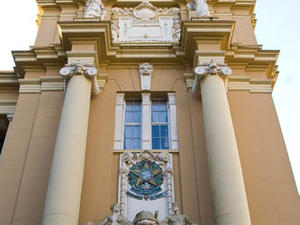 Arte do Rio Grande do Sul Museum - MAP 7
To keep, to contemplate, to store, to search, to inspire. Of all these important actions taken by a museum institution, I daresay that the latter is more crucial for the current management of the Museum of Art of Rio Grande do Sul, because to be a space in the service of society and its development with an aim of study, education, enjoyment and physical evidence - as defined by the International Council of Museums (ICOM) - moti... Arte do Rio Grande do Sul Museum - MAP 7
To keep, to contemplate, to store, to search, to inspire. Of all these important actions taken by a museum institution, I daresay that the latter is more crucial for the current management of the Museum of Art of Rio Grande do Sul, because to be a space in the service of society and its development with an aim of study, education, enjoyment and physical evidence - as defined by the International Council of Museums (ICOM) - moti... |
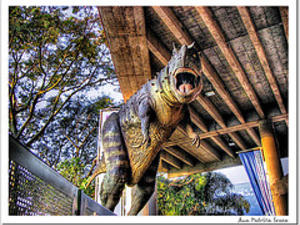 Ciencias e Tecnologia PUCRS Museum - MAP 7
The Museum of Science and Technology of PUCRS (MCT-PUCRS) whose main objectives are to disseminate knowledge on science and technology, participate actively in the process of education at all levels and act in scientific research on biodiversity, paleontology, archeology and conservation.
MCT-PUCRS has a large area of permanent public display, with over 10 thousand square meters, where about 750 interactive equipment are expos... Ciencias e Tecnologia PUCRS Museum - MAP 7
The Museum of Science and Technology of PUCRS (MCT-PUCRS) whose main objectives are to disseminate knowledge on science and technology, participate actively in the process of education at all levels and act in scientific research on biodiversity, paleontology, archeology and conservation.
MCT-PUCRS has a large area of permanent public display, with over 10 thousand square meters, where about 750 interactive equipment are expos... |
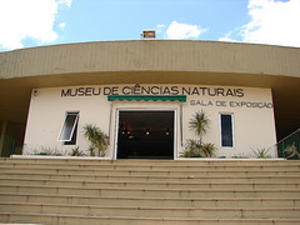 Ciências Naturais Fundação Zoobotânica Museum - MAP 7
Research agency that conducts studies of flora and fauna, and fossil and current terrestrial and aquatic ecosystems. With nearly 3,000 m², including laboratory, offices, exhibition halls and research collections, with a library consisting of more than 432 000 specimens of animals and plants.
The Natural Science Museum promotes science communication through the publication of journals, handbooks and manuals of fauna and fl... Ciências Naturais Fundação Zoobotânica Museum - MAP 7
Research agency that conducts studies of flora and fauna, and fossil and current terrestrial and aquatic ecosystems. With nearly 3,000 m², including laboratory, offices, exhibition halls and research collections, with a library consisting of more than 432 000 specimens of animals and plants.
The Natural Science Museum promotes science communication through the publication of journals, handbooks and manuals of fauna and fl... |
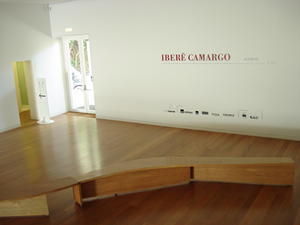 Fundação Iberê Camargo - MAP 7
The Iberê Camargo Foundation was established in 1995 with the objective of preserving and disseminating the works of the renowned Brazilian painter Ibere Camargo. In addition to letting the public know that he is one of the great masters of art in the twentieth century, the institution seeks to encourage reflection on contemporary artistic production.
Each year, there are exhibitions, workshops, courses, seminars, mee... Fundação Iberê Camargo - MAP 7
The Iberê Camargo Foundation was established in 1995 with the objective of preserving and disseminating the works of the renowned Brazilian painter Ibere Camargo. In addition to letting the public know that he is one of the great masters of art in the twentieth century, the institution seeks to encourage reflection on contemporary artistic production.
Each year, there are exhibitions, workshops, courses, seminars, mee... |
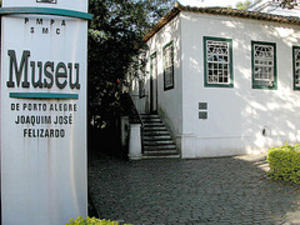 Joaquim José Felizardo Museum - MAP 7
Joaquim Jose Felizardo Museum, Historical Museum of Porto Alegre, has as its headquarters the Solar Lopo Gonçalves, built between 1845 and 1855, at the former Rua da Margem) (now João Alfredo), with architecture of Luso-Brazilian influence to be "residence on the estate", resting place of the Portuguese merchant family Lopo Gonçalves, on weekends and holidays.
Lopo Gonçalves ex... Joaquim José Felizardo Museum - MAP 7
Joaquim Jose Felizardo Museum, Historical Museum of Porto Alegre, has as its headquarters the Solar Lopo Gonçalves, built between 1845 and 1855, at the former Rua da Margem) (now João Alfredo), with architecture of Luso-Brazilian influence to be "residence on the estate", resting place of the Portuguese merchant family Lopo Gonçalves, on weekends and holidays.
Lopo Gonçalves ex... |
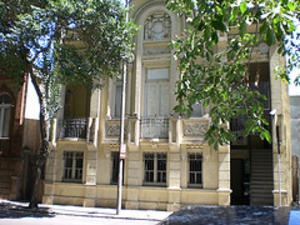 Júlio de Castilhos Museum - MAP 7
Over a century of existence, the Museum of Julio Castilhos has been promoting the expression of cultural identities of the people of Rio Grande, democratizing access to knowledge and allowing critical reflection on issues related to the history of Rio Grande do Sul and Brazil.
On January 30, 1903 the then State President, Borges de Medeiros, signed the decree creating the first museum in Rio Grande do Sul: the State Mu... Júlio de Castilhos Museum - MAP 7
Over a century of existence, the Museum of Julio Castilhos has been promoting the expression of cultural identities of the people of Rio Grande, democratizing access to knowledge and allowing critical reflection on issues related to the history of Rio Grande do Sul and Brazil.
On January 30, 1903 the then State President, Borges de Medeiros, signed the decree creating the first museum in Rio Grande do Sul: the State Mu... |
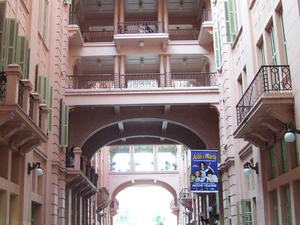 Mário Quintana House of Culture - MAP 7
This House of Culture is located in the place where the Majestic Hotel used to work. Mario Quintana, one of the country's most important poets among the group of contemporary ones spent most of his life here. Hence, this house became a symbolic building in Porto Alegre. Nowadays, this house is one of the city's major attractions not only because of its eclectic architecture, but also becaus... Mário Quintana House of Culture - MAP 7
This House of Culture is located in the place where the Majestic Hotel used to work. Mario Quintana, one of the country's most important poets among the group of contemporary ones spent most of his life here. Hence, this house became a symbolic building in Porto Alegre. Nowadays, this house is one of the city's major attractions not only because of its eclectic architecture, but also becaus... |
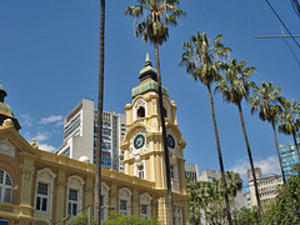 Memorial do Rio Grande do Sul - MAP The idea of creating an institution that emphasized the gaucho culture emerged between 1995 and 1996, being implemented through a partnership between federal and state governments in September 1996. It was agreed at that time that the headquarters of the post office for almost a century, would house a place of dissemination of culture and memory Rio Grande. The agreement for transfer of the building also led the creation of a Post... Memorial do Rio Grande do Sul - MAP The idea of creating an institution that emphasized the gaucho culture emerged between 1995 and 1996, being implemented through a partnership between federal and state governments in September 1996. It was agreed at that time that the headquarters of the post office for almost a century, would house a place of dissemination of culture and memory Rio Grande. The agreement for transfer of the building also led the creation of a Post... |
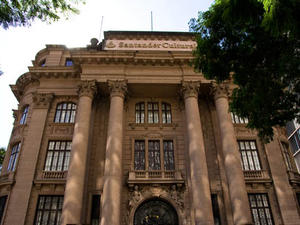 Santander Cultural - MAP Santander is a cultural institution of Santander Brazil, formed by the banks Santander and Real, focused on the integration and dissemination of the diversity of languages and artistic-cultural. Committed to contemporary culture, with the knowledge and the socio-economic development, operates in the fields of visual arts, music, film and reflection. Committed to the integration of various social, Santander Cultural works through ... Santander Cultural - MAP Santander is a cultural institution of Santander Brazil, formed by the banks Santander and Real, focused on the integration and dissemination of the diversity of languages and artistic-cultural. Committed to contemporary culture, with the knowledge and the socio-economic development, operates in the fields of visual arts, music, film and reflection. Committed to the integration of various social, Santander Cultural works through ... |
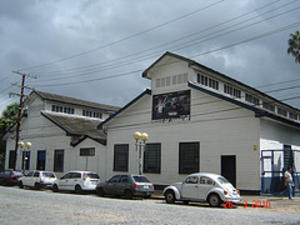 Trabalho Museum - MAP Founded on December 7, 1982, the Museum of Labor was part of a larger project of preservation and restoration of ancient Usina do Gasometro, then abandoned by Eletrobrás.
Aiming to prevent the demolition of the building, a group of students and teachers, PUCRS - Pontificia Universidade Catolica do RGS, led by sociologist Marcos Flávio Soares, initiated a broad public debate on the fate of the plant. Thanks to thi... Trabalho Museum - MAP Founded on December 7, 1982, the Museum of Labor was part of a larger project of preservation and restoration of ancient Usina do Gasometro, then abandoned by Eletrobrás.
Aiming to prevent the demolition of the building, a group of students and teachers, PUCRS - Pontificia Universidade Catolica do RGS, led by sociologist Marcos Flávio Soares, initiated a broad public debate on the fate of the plant. Thanks to thi... |
 Arte do Rio Grande do Sul Museum - MAP 7
To keep, to contemplate, to store, to search, to inspire. Of all these important actions taken by a museum institution, I daresay that the latter is more crucial for the current management of the Museum of Art of Rio Grande do Sul, because to be a space in the service of society and its development with an aim of study, education, enjoyment and physical evidence - as defined by the International Council of Museums (ICOM) - moti...
Arte do Rio Grande do Sul Museum - MAP 7
To keep, to contemplate, to store, to search, to inspire. Of all these important actions taken by a museum institution, I daresay that the latter is more crucial for the current management of the Museum of Art of Rio Grande do Sul, because to be a space in the service of society and its development with an aim of study, education, enjoyment and physical evidence - as defined by the International Council of Museums (ICOM) - moti... Ciencias e Tecnologia PUCRS Museum - MAP 7
The Museum of Science and Technology of PUCRS (MCT-PUCRS) whose main objectives are to disseminate knowledge on science and technology, participate actively in the process of education at all levels and act in scientific research on biodiversity, paleontology, archeology and conservation.
MCT-PUCRS has a large area of permanent public display, with over 10 thousand square meters, where about 750 interactive equipment are expos...
Ciencias e Tecnologia PUCRS Museum - MAP 7
The Museum of Science and Technology of PUCRS (MCT-PUCRS) whose main objectives are to disseminate knowledge on science and technology, participate actively in the process of education at all levels and act in scientific research on biodiversity, paleontology, archeology and conservation.
MCT-PUCRS has a large area of permanent public display, with over 10 thousand square meters, where about 750 interactive equipment are expos... Ciências Naturais Fundação Zoobotânica Museum - MAP 7
Research agency that conducts studies of flora and fauna, and fossil and current terrestrial and aquatic ecosystems. With nearly 3,000 m², including laboratory, offices, exhibition halls and research collections, with a library consisting of more than 432 000 specimens of animals and plants.
The Natural Science Museum promotes science communication through the publication of journals, handbooks and manuals of fauna and fl...
Ciências Naturais Fundação Zoobotânica Museum - MAP 7
Research agency that conducts studies of flora and fauna, and fossil and current terrestrial and aquatic ecosystems. With nearly 3,000 m², including laboratory, offices, exhibition halls and research collections, with a library consisting of more than 432 000 specimens of animals and plants.
The Natural Science Museum promotes science communication through the publication of journals, handbooks and manuals of fauna and fl... Fundação Iberê Camargo - MAP 7
The Iberê Camargo Foundation was established in 1995 with the objective of preserving and disseminating the works of the renowned Brazilian painter Ibere Camargo. In addition to letting the public know that he is one of the great masters of art in the twentieth century, the institution seeks to encourage reflection on contemporary artistic production.
Each year, there are exhibitions, workshops, courses, seminars, mee...
Fundação Iberê Camargo - MAP 7
The Iberê Camargo Foundation was established in 1995 with the objective of preserving and disseminating the works of the renowned Brazilian painter Ibere Camargo. In addition to letting the public know that he is one of the great masters of art in the twentieth century, the institution seeks to encourage reflection on contemporary artistic production.
Each year, there are exhibitions, workshops, courses, seminars, mee... Joaquim José Felizardo Museum - MAP 7
Joaquim Jose Felizardo Museum, Historical Museum of Porto Alegre, has as its headquarters the Solar Lopo Gonçalves, built between 1845 and 1855, at the former Rua da Margem) (now João Alfredo), with architecture of Luso-Brazilian influence to be "residence on the estate", resting place of the Portuguese merchant family Lopo Gonçalves, on weekends and holidays.
Lopo Gonçalves ex...
Joaquim José Felizardo Museum - MAP 7
Joaquim Jose Felizardo Museum, Historical Museum of Porto Alegre, has as its headquarters the Solar Lopo Gonçalves, built between 1845 and 1855, at the former Rua da Margem) (now João Alfredo), with architecture of Luso-Brazilian influence to be "residence on the estate", resting place of the Portuguese merchant family Lopo Gonçalves, on weekends and holidays.
Lopo Gonçalves ex... Júlio de Castilhos Museum - MAP 7
Over a century of existence, the Museum of Julio Castilhos has been promoting the expression of cultural identities of the people of Rio Grande, democratizing access to knowledge and allowing critical reflection on issues related to the history of Rio Grande do Sul and Brazil.
On January 30, 1903 the then State President, Borges de Medeiros, signed the decree creating the first museum in Rio Grande do Sul: the State Mu...
Júlio de Castilhos Museum - MAP 7
Over a century of existence, the Museum of Julio Castilhos has been promoting the expression of cultural identities of the people of Rio Grande, democratizing access to knowledge and allowing critical reflection on issues related to the history of Rio Grande do Sul and Brazil.
On January 30, 1903 the then State President, Borges de Medeiros, signed the decree creating the first museum in Rio Grande do Sul: the State Mu... Mário Quintana House of Culture - MAP 7
This House of Culture is located in the place where the Majestic Hotel used to work. Mario Quintana, one of the country's most important poets among the group of contemporary ones spent most of his life here. Hence, this house became a symbolic building in Porto Alegre. Nowadays, this house is one of the city's major attractions not only because of its eclectic architecture, but also becaus...
Mário Quintana House of Culture - MAP 7
This House of Culture is located in the place where the Majestic Hotel used to work. Mario Quintana, one of the country's most important poets among the group of contemporary ones spent most of his life here. Hence, this house became a symbolic building in Porto Alegre. Nowadays, this house is one of the city's major attractions not only because of its eclectic architecture, but also becaus... Memorial do Rio Grande do Sul - MAP The idea of creating an institution that emphasized the gaucho culture emerged between 1995 and 1996, being implemented through a partnership between federal and state governments in September 1996. It was agreed at that time that the headquarters of the post office for almost a century, would house a place of dissemination of culture and memory Rio Grande. The agreement for transfer of the building also led the creation of a Post...
Memorial do Rio Grande do Sul - MAP The idea of creating an institution that emphasized the gaucho culture emerged between 1995 and 1996, being implemented through a partnership between federal and state governments in September 1996. It was agreed at that time that the headquarters of the post office for almost a century, would house a place of dissemination of culture and memory Rio Grande. The agreement for transfer of the building also led the creation of a Post... Santander Cultural - MAP Santander is a cultural institution of Santander Brazil, formed by the banks Santander and Real, focused on the integration and dissemination of the diversity of languages and artistic-cultural. Committed to contemporary culture, with the knowledge and the socio-economic development, operates in the fields of visual arts, music, film and reflection. Committed to the integration of various social, Santander Cultural works through ...
Santander Cultural - MAP Santander is a cultural institution of Santander Brazil, formed by the banks Santander and Real, focused on the integration and dissemination of the diversity of languages and artistic-cultural. Committed to contemporary culture, with the knowledge and the socio-economic development, operates in the fields of visual arts, music, film and reflection. Committed to the integration of various social, Santander Cultural works through ... Trabalho Museum - MAP Founded on December 7, 1982, the Museum of Labor was part of a larger project of preservation and restoration of ancient Usina do Gasometro, then abandoned by Eletrobrás.
Aiming to prevent the demolition of the building, a group of students and teachers, PUCRS - Pontificia Universidade Catolica do RGS, led by sociologist Marcos Flávio Soares, initiated a broad public debate on the fate of the plant. Thanks to thi...
Trabalho Museum - MAP Founded on December 7, 1982, the Museum of Labor was part of a larger project of preservation and restoration of ancient Usina do Gasometro, then abandoned by Eletrobrás.
Aiming to prevent the demolition of the building, a group of students and teachers, PUCRS - Pontificia Universidade Catolica do RGS, led by sociologist Marcos Flávio Soares, initiated a broad public debate on the fate of the plant. Thanks to thi...